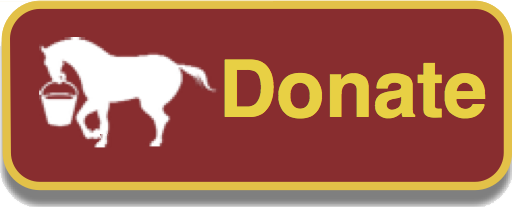Given the great success of our adoption program and the recent surge in horse
inquiries, I have been reviewing a great number of applications of late. We carefully
screen the applications as they provide us with helpful information in which to determine
if an applicant is a good fit for our program, and whether or not we have a potential
match. There are several questions that really help differentiate the serious adopters
who are truly interested in re-homing the previously unwanted horse. These responses
are explored in greater detail during the interview and barn walk portion of the adoption
process. The swath of answers to the question about preferred training techniques is
always very interesting and runs the gamut from unmentioned “natural horsemanship”
techniques to dressage, Hunter/Jumper, Clinton Anderson, Parelli, and beyond. I often
find that there is more obscurity in these answers than in the unwillingness to provide an
anticipated annual budget by way of commenting, “Whatever it takes”.
Recently, during the latter stages of preparing one of our treasured horses for their
forever home, the adopter turned the tables and queried me on the “right answer” to the
question. Without giving it much thought I told her that I was not sure there was a right
answer, but that I subscribe to the Brontosaurus mindset of training horses. I could
visibly see the furrow between her brows as she stopped tentatively in her tracks, as if
trying to recall some contemporary or new training technique. I laughed at my answer,
wanting to get her off of the spot and quickly explained. I think that in training horses,
we want to do so similar to the way that we would ride a Brontosaurus. Basically, If I
were to ride a Brontosaurus it would be most prudent to ride it in the direction in which it
was headed; sharp turns and quick stops would be pretty darn near impossible to
achieve, so I would be inclined to course correct slowly and not expect something that
would be too difficult to accomplish in a short period of time.
As a great lover of horses and a committed horsewoman, I have worked diligently to
become as adjustable as possible. This has been a lifelong pursuit and a goal that may
never be completely met, but one that I consciously strive to attain. I suppose the
easiest way to encapsulate this concept is to simply say that we need to ride the horse
that we are riding. Too often, a rider will expect a horse to adjust to their hand, leg or
seat, leaving the horse with fewer options and often less fluidity than if the rider adjusted
for the horse. In my experience, too often one will become overly committed to a
technique and use it as a crutch, and therefore be more limited as a rider and less
effective. This results in not being aware of what the horse is trying to tell us, or
demonstrating a commitment to learning to truly be effective. For this reason, at Red
Bucket we train, care for, and handle our horses by way of our operating values and not
one specific technique. Even in leading a horse to a turnout, too slack of a rope can get
a handler in a bit of trouble with one horse, while it is exactly right for another. In the
saddle a raised hand may be very effective in balancing a downhill horse, but might
prevent another from moving forward with a relaxed and open stride. In learning to listen
to our horses, observe their behavior, and modify our approach by way of understanding
the horse’s story, we can engage and connect with the horse in such a way that builds
confidence, trust, and ultimately results in positive outcomes.
While the rain had ceased, it was a bit too windy to make the riding conditions ideal.
After too little work and a gust of wind that lifted his tail, my horse tricked me. He had
started out a little behind my leg and not as bright as I had expected, even bordering on
mildly lackluster. He was compliant and a little dull on flat and waited until I cantered him
over a pole to explode. I am still not completely sure if it was luck or skill, but I managed
to stay with him during his firestorm of nose-to-the-ground bucking and a few cheapshot
swerving moves that made me later question his Hanoverian heritage. I did not
overly react, but pulled him together and added a little leg putting him to work on a few
different patterns of half-turns and reverses and figure eights. Within a few minutes,
both of our adrenalin dissipated and he began to gently bend around my inside leg and
listen to my seat and hand, and his brain became engaged. He actually seemed a little
embarrassed to have behaved so unprofessionally, and stood like the gentleman he
really is as I dismounted and gently removed his bridle and slid my saddle off of his
slightly warm back. He rubbed his beautiful head on my shoulder while giving me a
quick nuzzle before dropping at my feet for an energetic and grateful role. Consistent
with the Brontosaurus style of riding, which I deem to be largely grounded in behavioral
sciences, I borrowed a principle from Skinner…ignored behavior goes away in the
absence of other reinforcers. There was no reason to punish random behavior that was
stimulated by the environment; it was not a behavior that I was likely to experience
again, and had just been a reaction in the moment. I later curried and gently brushed
the dust from his otherwise gleaming coat and tucked him in for the night, grateful to
have ridden the horse that I had been riding…and most certainly grateful for the horse.


